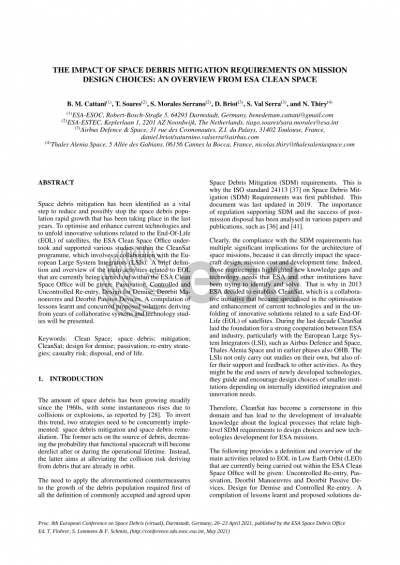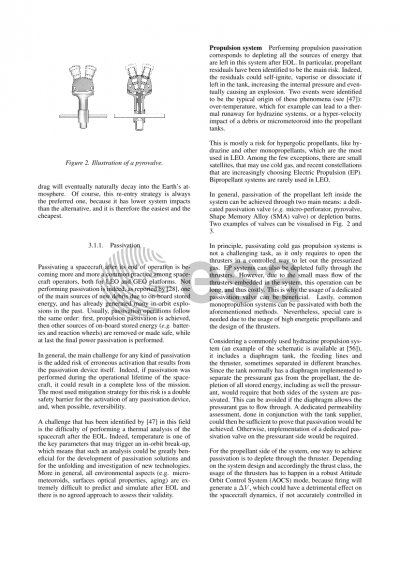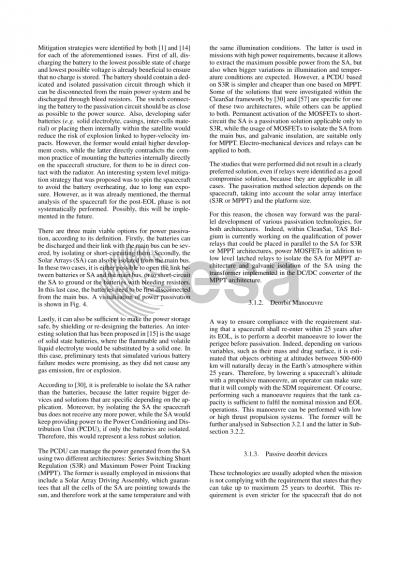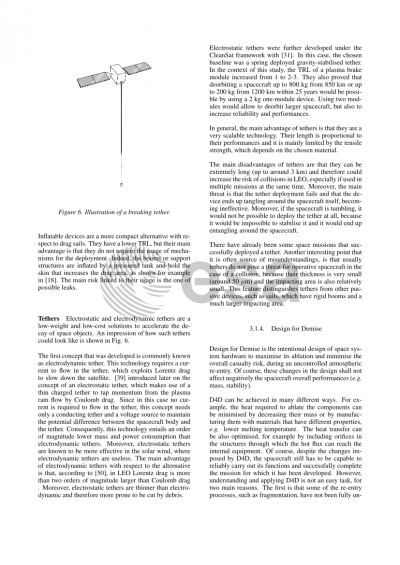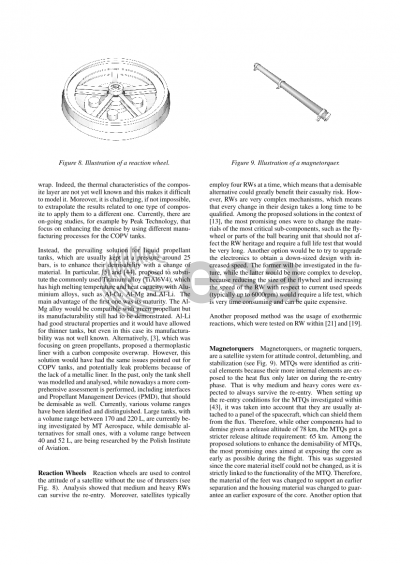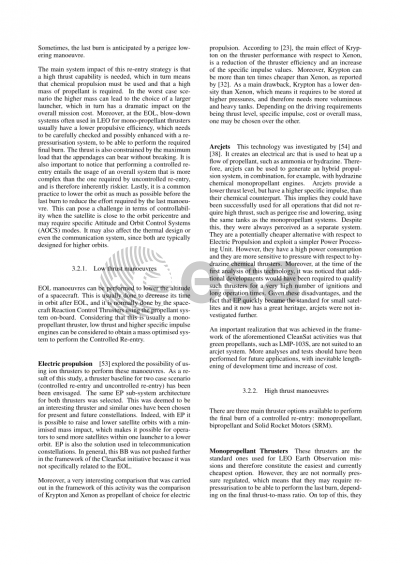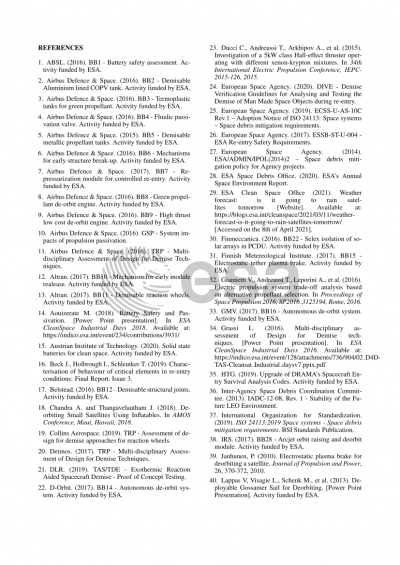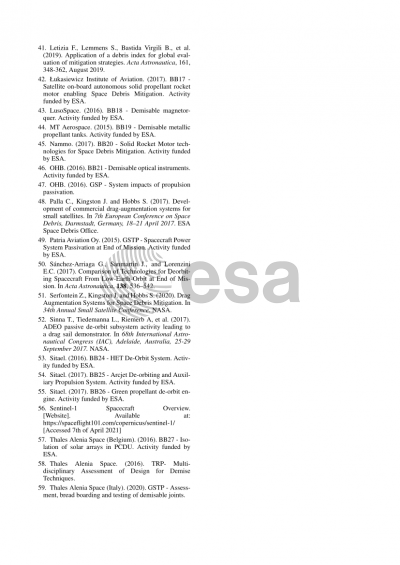Document details

Abstract
The compliance with the ISO standard 24113 on Space Debris Mitigation (SDM) Requirements, with the European Code of Conduct and with national laws has multiple significant implications for the architecture of space missions, because it can directly impact the spacecraft design, mission cost and development time.
The purpose of this paper is to unify and clarify the logical processes that relate high-level SDM requirements to design choices and new technologies development for ESA missions. Indeed, those requirements highlighted new knowledge gaps and needs that ESA and other institutions have been trying to identify and solve. In particular, to optimise and enhance current technologies and to unfold innovative solutions related to the End-Of-Life (EOL) of satellites, the ESA Clean Space Office undertook and supported various studies within the CleanSat programme.
CleanSat laid the foundation for a strong cooperation between ESA and industry, particularly with the European Large System Integrators (LSI), such as Thales Alenia Space and Airbus Defence and Space. The LSIs not only carry out studies on their own, but also offer their support and feedback to other activities. As they might be the end users of newly developed technologies, they guide and encourage design choices of smaller institutions depending on internally identified integration and innovation needs.
A brief definition and overview of the main activities related to EOL that are currently being carried out within the ESA Clean Space Office will be given: Passivation, Controlled, Un-controlled and Semi-controlled Re-entry, Design for Demise, De-orbit Manoeuvres and De-orbit Passive Devices. A compilation of lessons learnt and proposed solutions deriving from years of systems and technology studies will be presented. Subsequently, an overview of system and subsystem level impact of several of the aforementioned requirements will be given, alongside with the main drivers of research on new technologies. The systematic approach that was developed within the CleanSat programme and that links requirements and technologies will be illustrated.
This paper aims at providing a reference baseline for both research institutes and companies that are willing to become involved in EOL technologies and strategies development and investigation.
Preview
